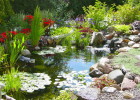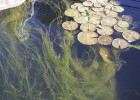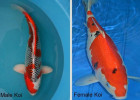How is the water quality in your Koi pond?
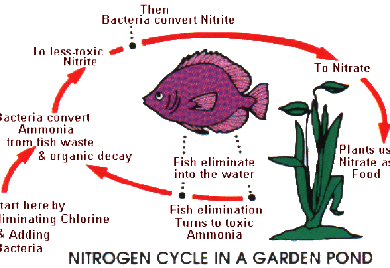
How is the water quality in your Koi pond?
By: Jacklyn Rodman – SunlandWaterGardens.comWater quality is everything in a Koi pond. The water quality is determined by many factors. How much sun, how many fish, how much you feed, what kind of food, how many plants and what kind filter and how often it is cleaned.
Controlling water quality is essential to keeping your Koi healthy. One of the best ways of controlling the toxins that Koi produce is by incorporating a biological filter into your pond.
There are 5 elements of the Nitrogen Cycle that are important to understand.
Ammonia (NH3)
Koi produce toxins. The main toxin that Koi produce is ammonia. Koi like other fish excrete it through their gills and in their waste. If too much ammonia builds up in your pond water, it will irritate your Koi’s gills. Long term exposure to ammonia will eventually start to harm their internal organs. Ammonia can be combated with biological filtration, aquatic plants, and large water changes.
Nitrite (NO2)
Nitrite is formed in the second stage of the Nitrogen Cycle. It isn’t as toxic as ammonia, but long term exposure can cause problems. Nitrite can make the hemoglobin in a Koi’s blood to coagulate, literally “suffocating” it. Adding salt to your pond will combat this.
Nitrate (NO3)
Nitrate is a by-product of the Nitrogen Cycle. The bacteria either in your pond filter or added with converts the toxic Nitrite into Nitrate. Nitrate will be removed with the addition of aquatic plants. The more pond plants you incorporate in your pond the healthier the pond and fish will be.
It is also recommend to do regular partial water changes. Remembering to also add your water conditioner. In areas like So. Calif you must remove chloramine which is a bond of ammonia and chlorine. Be sure your water conditioner is formulated to break the bond and remove chloramine.
pH (Potential of Hydrogen)
pH is the measure of free floating Hydrogen ions in your water. The more free floating Hydrogen Ions you have in your water, the lower your pH will be. The more free floating Hydroxide Ions you have in your water, the higher your pH will be.
A pH level of seven is neutral. A level below seven makes your water acidic. A level above seven makes your water alkaline. It is important to note that Koi can live comfortably in water with a pH range of 6.0 – 8.0.
Oxygen
Koi need dissolved Oxygen in their water to live. A DO (Dissolved Oxygen) level of 5+ must be maintained. This can be done with an air pump/air stone, waterfall or a fountain. It is vital to leave your pond pump or other oxygen producer on 24 hours a day. If the DO level drops below 5, you Koi will start to gasp at the surface and will eventually suffocate. In an emergency, Hydrogen Peroxide can be added into you pond to temporarily bring the DO level up.
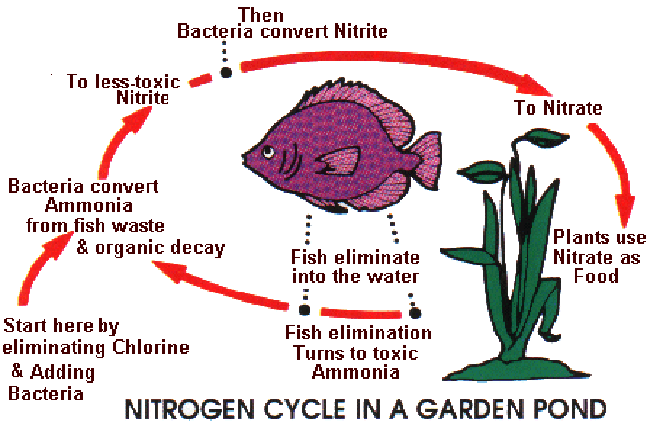
Nitrogen-cycle-in-a-pond,pond-care,pond-maintenance
Pond Talk Article: How is the water quality in your Koi pond?
Source: Sunland Water Gardens
Author: Jacklyn Rodman

